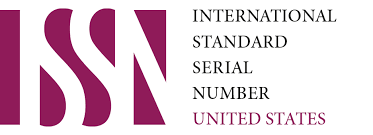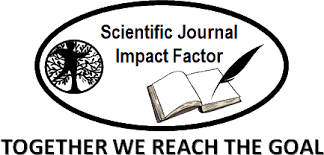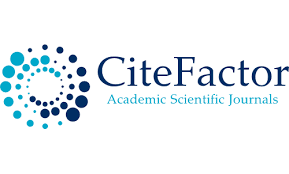Determining the Type of Clothing Suitable for Women With An Non Typical Figure
Keywords:
questionnaire, analysis, dress, desireAbstract
In this article, the results of the analysis of the types of clothing, colours and styles suitable for women with atypical body shapes, as well as their compatibility with modern fashion, are highlighted based on the analysis of the test questionnaire.
References
Dunayevskaya T. N., Koblyakova YE. B., Ivleva G. S. Razmernaya tipologiya noseleniya s osnovami anatomiy i morfologiy cheloveka. M., 1980.
Sodiqovna, A. M., Abdurashidovna, E. R., & Uktamovna, A. D. Study of female abnormal body types and their analysis. Journal INX-A Multidisciplinary Peer Reviewed Journal, 333-335.
Husanqizi, S. M., Ubaydulloyevna, Y. D., & Valiyevich, H. J. (2021). Analysis of the development of older women's clothing of different subcultures (On the example of muslim women's clothing). Asian Journal of Multidimensional Research, 10(9), 377-381.
D. B. Yuldasheva. , M. M. Raxmonova. , R. Omonullayev. (2022). Notipavoy qomat uchun konstruksiyalashning o‘ziga xos xususiyatlari. Scientific-technical journal (STJ FerPI), спец. выпуск №6. 134-136.
Abduraximova Manzura Sodiqovna. (2022). Notipaviy qomatli ayol-larga mos tushuvchi kiyim turini aniqlash. 41-45.
Пирязева, Т. В. (1999). Автоматизация конструирования плечевой одежды на нетиповые фигуры. Москва.
Raxmatovna, M. S. (2022). Analysis of women's clothes sewing-a study to develop a norm of time spent on the technological process of knitting production. International Journal of Advance Scientific Research, 2(03), 16-21.
Ayollar yengil kiyimini konstruksiyalash va modellashtirish. O’quv qo’llanma. Toshkent, 2003 yil.
Abdusattorovna, M. G., & Nasimjanovna, N. N. (2022). Technological features of the work of a double-knitting machine. International Journal of Advance Scientific Research, 2(06), 22-34.
Tursunova, X. S. (2021). Study of Preliminary Design Work for the Selection and Manufacture of Fabrics Based on the Analysis of School-Age Girls' Clothing. ISJ Theoretical & Applied Science, 11(103), 568-572.
Samiyevna, T. S., & Raxmatovna, M. S. (2022). The importance of creating embroidery patterns from the methods of artistic decoration in the light industry. Innovative Technologica: Methodical Research Journal, 3(05), 1-10.
Валиев, Г. Н., Хомидов, В. О., & Турдиев, М. (2020). Исследование влияния скорости снования на форму баллона нити натурального шёлка. In Научная Конференция (p. 195).
Abduraximova Manzura Sodiqovna. (2022). Notipaviy qomatli ayollarga reglan bichimli yeng turlarini avfzalligi.
Raxmatovna, M. S. (2022). Research on the development of norms of time spent on the technological process of sewing and knitting production; basic raw materials, their composition and properties. Innovative Technologica: Methodical Research Journal, 3(03), 28-32.
Abduraximova Manzura Sodiqovna., Ergasheva Rashida Abdurashidovna., Aripdjanova Dilafruz Uktamovna. (2021). Study of female abnormal body types and analysis. Journal INX-A Multidisciplinary Peer Reviewed Journal, 333-335.
D. B. Yuldasheva. , M. M. Raxmonova. , R. Omonullayev. Notipavoy qomat uchun konstruksiyalashning o‘ziga xos xususiyatlari. Scientific-technical journal (STJ FerPI, ФарПИ ИТЖ, НТЖ ФерПИ, 2022, спец. выпуск №6) 134-136.
bdurakhimova Manzura Sadiqovna. (2022). Development of a new model based on model models for women with non-typical figures. Innovative Technologica: Methodical Research Journal, 3(07), 8–16.
Валиев, Г. Н., Хомидов, В. О., & Турдиев, М. (2020). Исследование влияния скорости снования на форму баллона нити натурального шёлка. In Научная Конференция (p. 195).
Downloads
Published
Issue
Section
License

This work is licensed under a Creative Commons Attribution-NonCommercial 4.0 International License.
User Rights
Under the Creative Commons Attribution-NonCommercial 4.0 International (CC-BY-NC), the author (s) and users are free to share (copy, distribute and transmit the contribution).
Rights of Authors
Authors retain the following rights:
1. Copyright and other proprietary rights relating to the article, such as patent rights,
2. the right to use the substance of the article in future works, including lectures and books,
3. the right to reproduce the article for own purposes, provided the copies are not offered for sale,
4. the right to self-archive the article.












